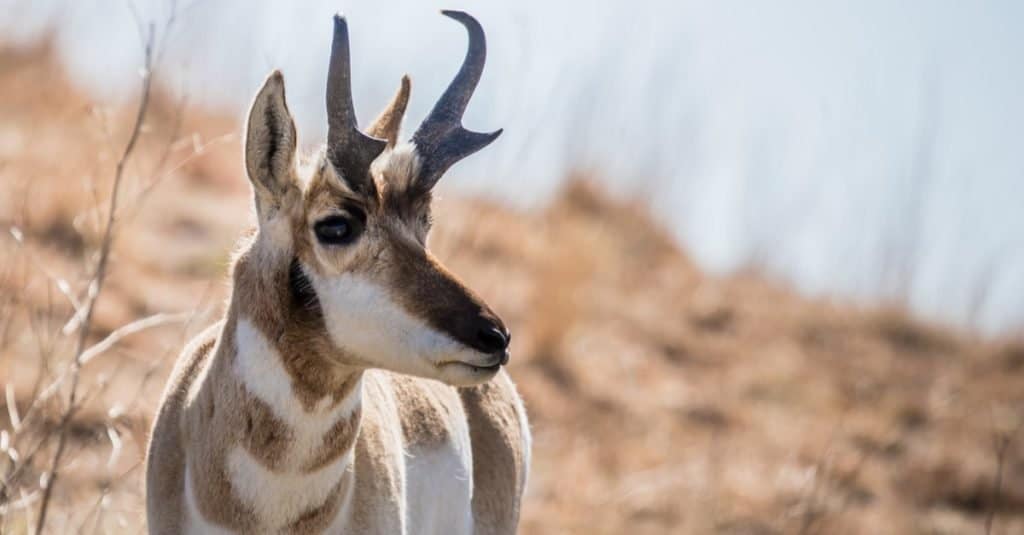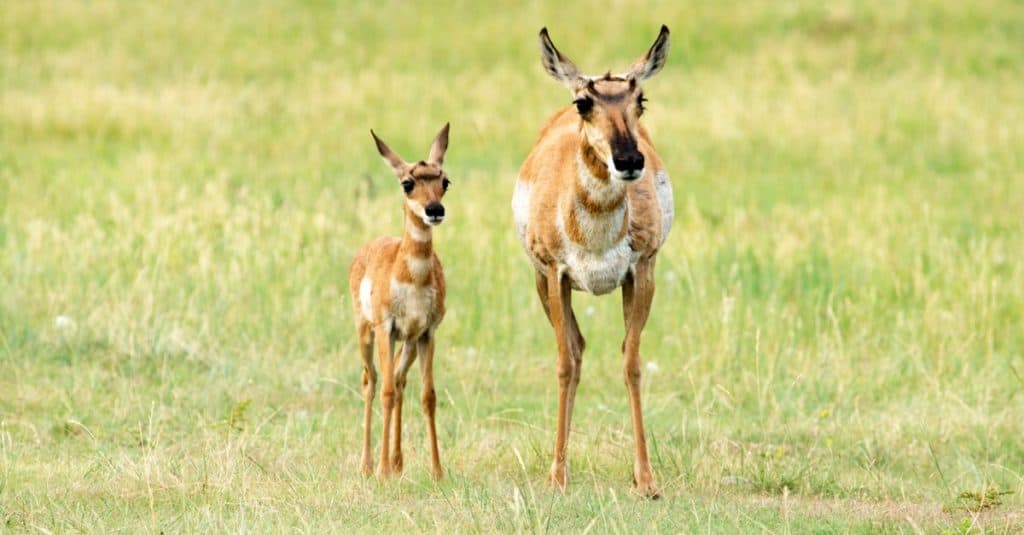Although Idaho is often known as the place that grows potatoes here in the United States, it’s actually one of the most beautiful and ecologically rich states in all of the northwest. Some of the most magnificent animals in the United States live in Idaho, including moose, grizzly bears, the gray wolf, and more. Today, we are going to take a look at one of the more interesting animals in the United States; the pronghorn. Let’s discover the largest pronghorn caught in Idaho, plus learn about this amazing animal!
The Largest Pronghorn Ever Caught in Idaho

The largest pronghorn ever caught in Idaho was caught in 1997.
©Jen DeVos/Shutterstock.com
Randy Grover is the record holder for the largest pronghorn ever caught in Idaho. The impressive trophy was caught in Clark County in 1997, and it scored an impressive 90 1/4. Generally speaking, Idaho isn’t the best place for pronghorn trophy hunting since most of the pronghorns in the region are smaller than the ones that can be found further south. New Mexico is usually recognized as the best place to find the largest pronghorn and is currently the state with the largest trophy record overall. Idaho’s big game records are kept on the IDFG (Idaho Fish and Game) website and can be sorted by animal and year.
Clark County is located in the eastern portion of the state, just south of the Montana border. It is home to a variety of wildlife, including pronghorns, mule deer, and elk. Wildlife is plentiful in these rural parts of Idaho, and the total population of the county is 790, making it the most rural county in the entire state.
How to Judge a Pronghorn Trophy
When “judging” a pronghorn trophy, there are a few things to note. First, the number that is listed as the record isn’t the length of the horns, but an overall score that is assigned from a combination of factors. The most common and widespread scoring system for pronghorn trophies is the Boone and Crockett Club, a hunting and conservation group that has been around since 1887. Pronghorns are a bit complex to score since their horns are a bit variable and have different metrics included in the overall “trophy score.” Here’s how they are professionally scored:
There are five “sections” that need to be graded in order to give a pronghorn trophy score. The sections are A, tip to tip distance, B, interior distance, C, length of horns from the outside, D (four parts), circumference of base and quarters 1, 2, and 3, and finally, E, the length of the prong.
These scores are then compiled and given right, left, subtotal, difference, gross, and final scores, of which the final is the one that is kept for records if applicable. In order to get any type of award, the trophy must be at least 80, or it can’t even be submitted to the Boone and Crockett Club at all.
The American Pronghorn: An Overview

The pronghorn is known for its long, slender legs and distinctive horns.
©iStock.com/Brent_1
The American pronghorn, also known as the pronghorn antelope, is a species of artiodactyl mammal native to the grasslands and sagebrush of North America. It is the only surviving member of the Antilocapridae family and is often considered to be the closest living relative of the giraffe.
Native Range and Habitat
The American pronghorn is native to the grasslands and sagebrush of western North America, including parts of the United States and Canada. It can be found in a variety of habitats, including prairies, sagebrush flats, and mountain meadows. The pronghorn is well-adapted to dry, arid habitat, with thick fur and hooves that allow it to travel easily across rough terrain. Idaho’s open and arid climate is the perfect place for pronghorns to live and thrive and has been for quite a long time.
Size
The American pronghorn is a medium-sized mammal, with males reaching an average weight of around 70 pounds and females weighing around 50 pounds. It has a distinctive appearance, with a tan or reddish-brown coat, white underparts, and black markings on the face and legs. The pronghorn is known for its long, slender legs and distinctive horns, which are present in both males and females. The horns are not true horns, but rather are composed of a bony core covered with a sheath of keratin.
Diet
The American pronghorn is an herbivore, feeding primarily on a diet of grasses, forbs, and herbs. It is able to survive in arid habitat due to its ability to extract moisture from food go without drinking water for long periods of time. However, when water is available, the pronghorn will drink and may also eat aquatic plants.
Special Facts
The American pronghorn is known for its impressive speed, with the ability to run at speeds of up to 60 miles per hour. This speed is primarily used for escape from predators, as the pronghorn has few natural defenses, and it’s generally recognized as the fastest land animal in the United States. The pronghorn is also a social animal, living in herds of up to 30 individuals. Herd is typically led by a dominant male, who will defend the rest from predators and other males. The pronghorn has a lifespan of around 8-10 years in the wild.
Up Next:
- 10 Incredible Pronghorn Facts
- Pronghorn vs Antelope: What Are Their Differences?
- Cheetah vs Pronghorn: Which Is Faster?
The photo featured at the top of this post is © Charles Lemar Brown/Shutterstock.com
Thank you for reading! Have some feedback for us? Contact the AZ Animals editorial team.






